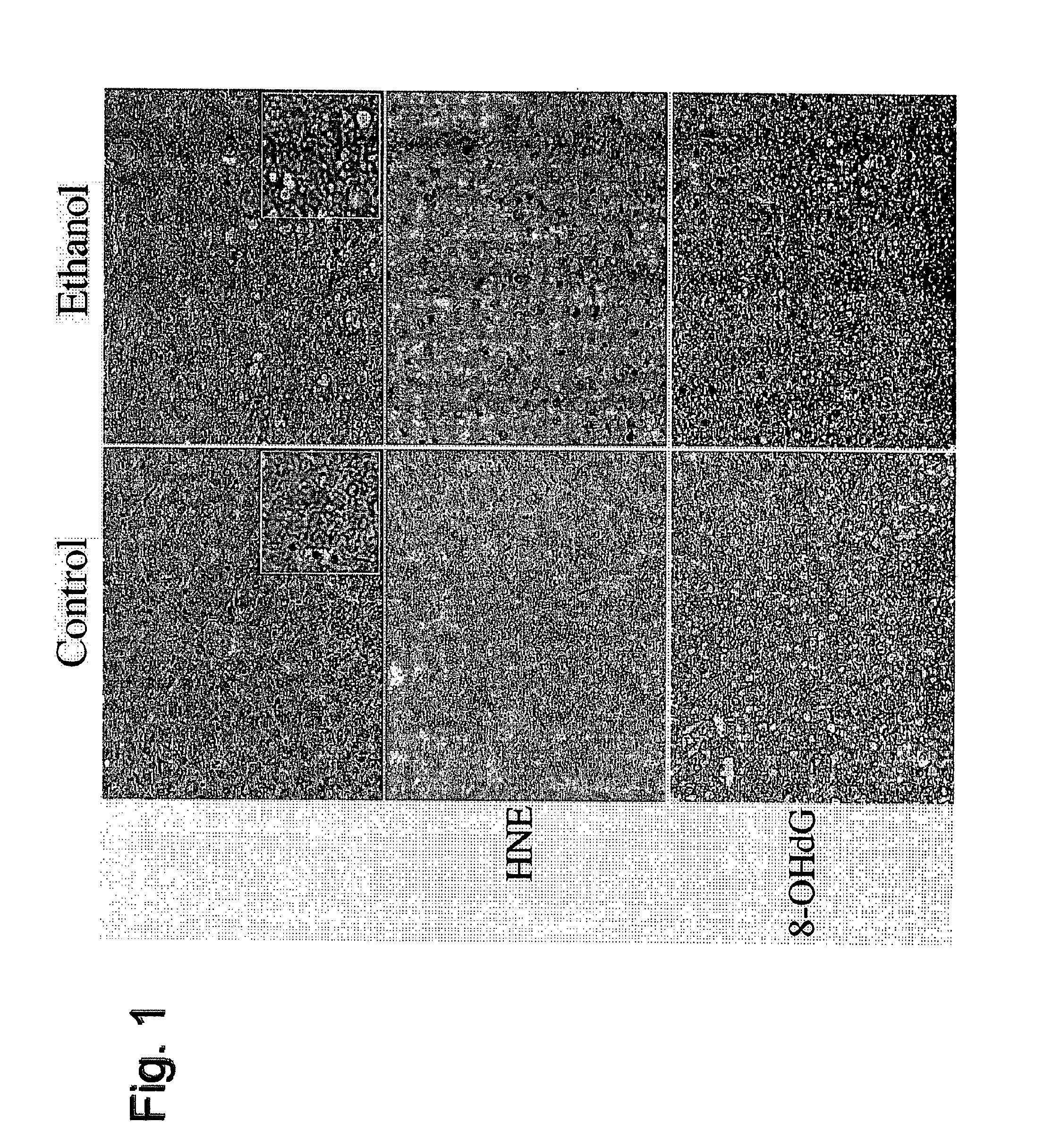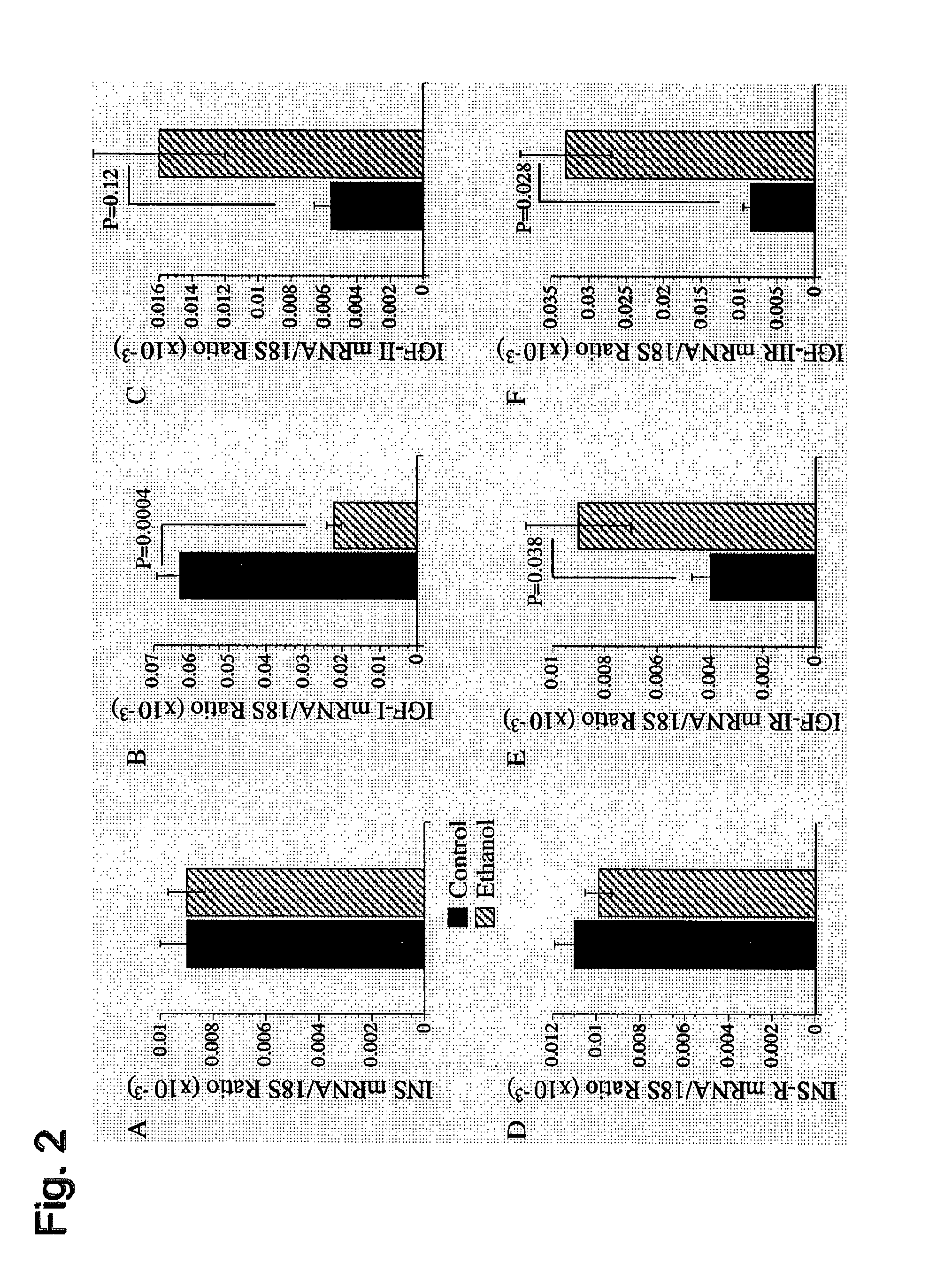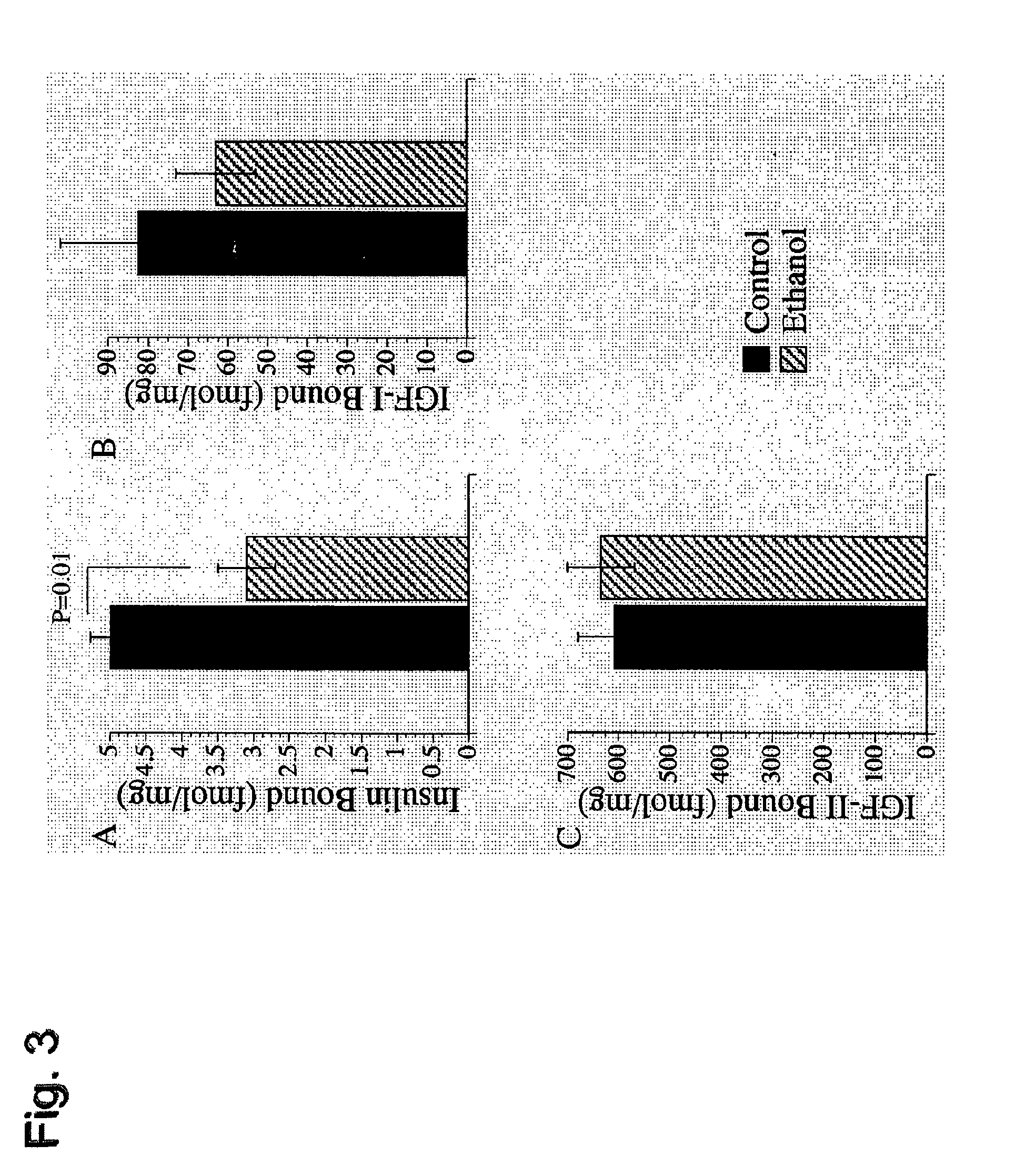Treatment, prevention,and reversal of alcohol-induced liver disease
a liver disease and alcohol-induced technology, applied in the field of medical therapy, can solve the problems of short and long-term ethanol exposure, ethanol consumption on the liver relates to oxidative, and affect the synthesis of hepatocyte dna in vitro, so as to prevent ongoing liver injury, inhibit oxidative stress and dna damage, and enhance liver regeneration
- Summary
- Abstract
- Description
- Claims
- Application Information
AI Technical Summary
Benefits of technology
Problems solved by technology
Method used
Image
Examples
example 1
General Methods
Experimental Design
[0090]In these studies, Long-Evans male rats were fed a 37% ethanol liquid diet for 6 weeks. An isocaloric (sucrose substituted for ethanol) diet was administered to pair fed control animals. After three weeks, both groups of rats were injected with either PPAR-α, γ, or δ agonists or saline as a control. The PPAR-α (GW7647), PPAR-γ (F-L-Leu) and PPAR-δ (L-160,043) activators were obtained from CalBiochem (Carlsbad, Calif.) and administered intraperitoneal (IP) at concentrations of 25 μg / kg, 20 μg / kg and 2 μg / kg respectively. The mice were given IP injections twice a week. At 6 weeks, the animals underwent ⅔ partial hepatectomy. The removed liver was used for histology, measurement of lipid peroxidation, DNA damage and insulin / IGF signaling as described below. Following ⅔ hepatectomy, the liver remnants were harvested 18, 24, 30 and 48 hours later to assess the regenerative response. To do this, animals were injected IP with BrdU 2 hours before harve...
example 2
General Methods
Chronic Ethanol Exposure Model:
[0103]Adult male (˜200-250 g) Long Evans rats (Harlan Sprague Dawley, Inc., Indianapolis, Ind.) were pair-fed with isocaloric liquid diets (BioServ, Frenchtown, N.J.) containing 0% (control) or 37% ethanol by caloric content (9.2% v / v) for 8 weeks. During the week prior to initiating the experiment, rats were adapted to the ethanol-containing diets by sequentially feeding them for two days each with diets containing 8%, 17%, 24%, and then 37% ethanol. Chow fed control rats were also studied. Rats were monitored daily to ensure equivalent food consumption and maintenance of body weight. During the last 3 weeks of the experiment while being maintained on either the 0% or 37% ethanol-containing liquid diets, rats in both groups were administered twice weekly (Mondays and Thursdays) intra-peritoneal (i.p.) injections of vehicle (saline), a PPAR-α (GW7647; 25 μg / kg), PPAR-δ (L-160,043; 2 μg / kg), or PPAR-γ (F-L-Leu; 20 μg / kg) agonist (CalBioch...
PUM
| Property | Measurement | Unit |
|---|---|---|
| body weight | aaaaa | aaaaa |
| body weight | aaaaa | aaaaa |
| body weight | aaaaa | aaaaa |
Abstract
Description
Claims
Application Information
 Login to View More
Login to View More - R&D
- Intellectual Property
- Life Sciences
- Materials
- Tech Scout
- Unparalleled Data Quality
- Higher Quality Content
- 60% Fewer Hallucinations
Browse by: Latest US Patents, China's latest patents, Technical Efficacy Thesaurus, Application Domain, Technology Topic, Popular Technical Reports.
© 2025 PatSnap. All rights reserved.Legal|Privacy policy|Modern Slavery Act Transparency Statement|Sitemap|About US| Contact US: help@patsnap.com



